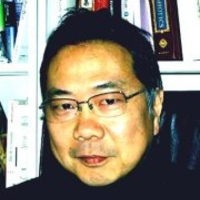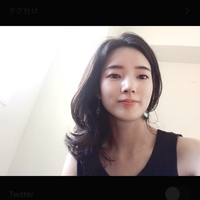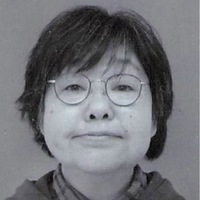Masaki Komori is a faculty member in the Department of Humanities, Musashi University. After receiving the Ph.D. from The Graduate School of Arts and Science of The University of Tokyo (Japan) and researching as Visiting Research Scholar at Temple University (Philadelphia, USA), he has been researching based in Tokyo since 2017. He writes and teaches in the fields of museum studies, cultural studies, sociology of art, and American studies. He is currently publishing his dissertation about culture wars in the United States through the lens of museum/exhibition as a contested site.
1982年岡山市生まれ。武蔵大学人文学部英語英米文化学科専任講師。東京大学総合文化研究科博士課程修了。テンプル大学歴史学部研究員、東京外国語大学ジュニアフェローを経て現職。専門はミュージアム研究、アメリカ文化研究。言論対立の場としてミュージアムを考察する方法で、芸術や科学をめぐる権力構造について研究している。研究活動の外、主催したアートプロジェクトに、「かじこ」(岡山市出石町、2010年。『かじこ——旅する場所の108日の記録』)などがある。
Supervisors: Yujin Yaguchi (University of Tokyo) and Bryant Simon (Temple University)
Address: 1-26-1 Toyotamakami, Nerima-ku, Tokyo, Japan
1982年岡山市生まれ。武蔵大学人文学部英語英米文化学科専任講師。東京大学総合文化研究科博士課程修了。テンプル大学歴史学部研究員、東京外国語大学ジュニアフェローを経て現職。専門はミュージアム研究、アメリカ文化研究。言論対立の場としてミュージアムを考察する方法で、芸術や科学をめぐる権力構造について研究している。研究活動の外、主催したアートプロジェクトに、「かじこ」(岡山市出石町、2010年。『かじこ——旅する場所の108日の記録』)などがある。
Supervisors: Yujin Yaguchi (University of Tokyo) and Bryant Simon (Temple University)
Address: 1-26-1 Toyotamakami, Nerima-ku, Tokyo, Japan
less
Related Authors
Naoto HIGUCHI
Waseda University
Jun Sakamoto
Hosei University
Hidetaka Ishida
The University of Tokyo
Nagisa Moritoki Škof
University of Ljubljana
Yukari Yamagishi
Hokkaido University
Kayo Ikeda
Kwansei Gakuin University 関西学院大学
InterestsView All (21)










Uploads
Papers by Masaki Komori
る。近年のソーシャルメディア(SNS)やスマートフォンの急速な普及は、
デジタル技術を利用したコミュニケーションを促進させた。とりわけ新型コ
ロナウイルスによるパンデミックはこうしたデジタル・コミュニケーション
をいっそう加速させ、アメリカ合衆国においては、もはや一部の人々のもの
とは言い難いほどの普及をみせた。デジタル・コミュニケーションの持
つインフラストラクチャー的性格がいっそう強まったとするならば、人々が
暮らす〈現場=フィールド〉には質的な変容も起こったと見なすことができ
るだろう。さらに現場のデジタル的な変容は、フィールドワークに基づく研
究の条件についても再考を促すものでもある。つまり、デジタル人文学の
知見がいっそう要請される事態が訪れている。本研究は、こうしたデジタル
化をめぐる近年の状況を理解し、とりわけ2020 年のパンデミック後の変化
について記録に留めることを目指すものである。
この一件はジャーナリズムでは「意識高い系改革派VS現状維持派」などと説明がなされてきたのですが、実はこの現象は、長らく続いてきたミュージアムや人文学、ひいては社会全体の「倫理」変化の歴史のなかにおいて見たほうが適切に理解できるのではないかと問題提起しています。
博論研究の頃から追いかけている同館は定点観測を続けている調査事例でもあり、また、過去に住んだ街のなかでも最も思い入れが深いフィラデルフィアの問題としても捉えられるもので、色々と「自分ごと」感がある話ということもあって力が入れて書きました。
https://phoiming.hatenadiary.org/entry/2023/04/05/004621
『博物館研究』vol.56 no.9 (no.640)、2021年9月、19-23。
科学や芸術を公に展示するミュージアムという施設にはさまざまな権力構造が絡まりあい、それらの結果として「文化」や「科学」や「芸術」は社会に形を取っている。いかにすればこうした力学を的確にとらえられるのか。こうした観点からミュージアムを研究してきた「展示の政治学(またはミュージアムの政治学)」理論について、日英言語圏を中心に論じた。関心を共有しながらもいくつかの研究領域(discipline)で分けて語られてきた研究群を結びつけるために、次の三つの潮流に体系立てて学説史を整理した。第一に、1980 年代半ばから始まる、ポストモダン文化人類学の流れを受けたポスト植民地主義論的ミュージアム研究。第二に、近代主義思想に関する制度論的研究。第三に、メディア論やカルチュラル・スタディーズの影響下に生まれた、コミュニケーション論的ミュージアム研究である。
本稿を通じて以下のことを明らかにした。第一、第二の議論では、「展示」とは意味を生成するメディアであり、そこには複数の意味が重なっていることが強調された。そして、この理解は研究・現場の双方で強く意識されるようになった。さらに第三の潮流に至り、来館者による展示解釈が、新たな調査対象として前景化する。このことで、対立・協調の過程から生じる展示がもつ意味の重層性について、来館者の観点からも理解すべきとする共通の課題が確認され始めることになった。すなわち、現在の展示の政治学は、受容理論を取り入れることで、論争的な課題を抱える歴史認識論・記憶論の議論を牽引するものになっていると結論づけた。
日本語圏と欧米言語圏の研究相互の関わり合い(や関わり合いのなさ)について日本語で整理することで、ミュージアムや展示について研究する基礎資料としての利用を想定している。
This paper is a historiographic review of the museum studies theory called “politics of display/politics of museum.” It explores the history of museum studies from the standpoint of museum politics: “museum” as a site for power politics and the social dynamics of the relevant actors associated with museums and exhibitions: curators, exhibition designers, educators, museum staff, museum committees, and visitors. This theory considers modern conceptions of “culture,” “science,” and “art” as social constructs emerging from these political processes.
To shape this historiography derived from scholarly works mainly in English and Japanese, this paper narrates these discussions in three roughly chronological currents: 1) the trend of post-colonial museum studies and postmodern anthropology since the 1980s; 2) the tendencies of institutional analyses in the critique of modernism; 3) the tide of communication studies in museum fields, which was strongly influenced by cultural studies and media studies.
In the first and second trends, museums and displays became considered as political sites and complex assemblages that constitute a web of meaning. Throughout these trends, this understanding of how to interpret museums was common in both practical and theoretical fields. As the third stage goes, communication studies focused on the receptive aspect and museum theory focused on the visitor’s experience in the meaning-making process. As a result, it is nearly inevitable for museum scholars to discuss museum politics without mentioning receptions at museums. Through analyzing these three movements, this paper uncovers the historical path of increased significance on reception theory in recent museum politics.
In the context of creation-evolution controversy since the 19th century, creationists after the 1970s have emphasized the validity of creationism by using scientific explanations, or so-called “creation science.” However, evolutionists have harshly criticized it and have argued that the controversy does not serve as a ground for “scientific debate.” Meanwhile, creationists have taken another strategy for justifying the creation science. With the change in the role of museum education particularly since the 1980s, scientifically authorized objects at exhibitions often have been replaced by replicas of authorized objects or audio-visual materials. As the visitors do not pay much attention to whether objects at science museums are scientifically authentic or not, the Creation Museum has come to use many scientifically unauthorized materials as their scientific “evidence.” From my analysis of its exhibitions, I demonstrate that this strategy enables the museum to succeed in avoiding the evolutionists’ counterarguments on the exhibited objects by appropriating traits of typical science museums.
[*An English version will be published soon.]
Books by Masaki Komori
なお、本書は武蔵大学人文学部におけるリレー講義の教科書として編まれたものである。
This book was edited and published as a textbook for the Humanities Department at Musashi University. Museum studies scholar Masaki Komori tackles in the fourth chapter how museums, exhibitions, and artworks have been playing a significant role in historical narrative-making. While analyzing an artwork by Guerrilla Girls, exhibits at National Gallery in London, The National Museum of Women in the Arts (NMWA) in D.C. and Brooklyn Museum to demonstrate case studies in women’s history, black history and LGBTQ history, the chapter points out how important the intersectionality between gender and ethnicity functions in narrating and education in history.
「主体的な学び(ラーニング)」というフレーズを一度は皆さん聞いたことがあると思いますが、それくらいに日本でもラーニング教育は普及しています。欧米の美術界に牽引されながら、美術館において実験的な美術教育を行うことは日本でも普及してきました。今回のあいトリでも、ラーニングのキュレーターの会田大也さんの企画、アーティストの日比野克彦さんと建築家の遠藤幹子さんのリード、そして各所のコーディネータとスタッフたちの協働作業によって、まさにこの種の実験的で「作品」と呼ぶべき教育企画が行われました。しかし、こうした胎動する現場に比べ、美術の言論では教育活動をうまく評するものが少ないと感じてきました。そこで今回、美術批評とミュージアムの現場との橋渡しができればと思って論を寄せました。教育をテーマにした実験的な試みがアートシーンに増えたことは「教育的転回」などとも呼ばれますが、こうした立場から、キュレーションや美術作品と同じように、教育プログラムにももっと創造性があると評価できるのではないかという投げかけでもあります。
2019年のあいちトリエンナーレでは、不幸にも、「表現の自由」が失われつつある芸術をめぐる現在の状況を象徴するような事件が起こり、そこに議論が集中してしまったきらいがあります。しかし、現場では表現の自由を守ろうとする人々の動きがありました。展示を見ることもしない人々がウェブ上で「炎上」させ続けた「表現の不自由展・その後」のすぐ隣りでは、アート・プレイグラウンドで子供たちが「交流」し、思想信条を超えて来館者同士が深い「対話」を交わしていました。ここでは、未来と社会の「公共性」が育まれていたと感じています。この様子が克明に記録された報告書の「TALK 受け手ノート」には勇気をもらいました。本件で主に焦点が当たってきたのは、炎上の火種となった右翼の活動や、芸術監督の津田大介さん、抑圧したり援助する政治家たち、文化庁とその背後にいる日本政府、そしてもちろん、アーティストのボイコットやカウンター的活動です。本書が描くのは、「現場のスタッフと来場者」というもう一つの顔です。
Book Reviews by Masaki Komori
る。近年のソーシャルメディア(SNS)やスマートフォンの急速な普及は、
デジタル技術を利用したコミュニケーションを促進させた。とりわけ新型コ
ロナウイルスによるパンデミックはこうしたデジタル・コミュニケーション
をいっそう加速させ、アメリカ合衆国においては、もはや一部の人々のもの
とは言い難いほどの普及をみせた。デジタル・コミュニケーションの持
つインフラストラクチャー的性格がいっそう強まったとするならば、人々が
暮らす〈現場=フィールド〉には質的な変容も起こったと見なすことができ
るだろう。さらに現場のデジタル的な変容は、フィールドワークに基づく研
究の条件についても再考を促すものでもある。つまり、デジタル人文学の
知見がいっそう要請される事態が訪れている。本研究は、こうしたデジタル
化をめぐる近年の状況を理解し、とりわけ2020 年のパンデミック後の変化
について記録に留めることを目指すものである。
この一件はジャーナリズムでは「意識高い系改革派VS現状維持派」などと説明がなされてきたのですが、実はこの現象は、長らく続いてきたミュージアムや人文学、ひいては社会全体の「倫理」変化の歴史のなかにおいて見たほうが適切に理解できるのではないかと問題提起しています。
博論研究の頃から追いかけている同館は定点観測を続けている調査事例でもあり、また、過去に住んだ街のなかでも最も思い入れが深いフィラデルフィアの問題としても捉えられるもので、色々と「自分ごと」感がある話ということもあって力が入れて書きました。
https://phoiming.hatenadiary.org/entry/2023/04/05/004621
『博物館研究』vol.56 no.9 (no.640)、2021年9月、19-23。
科学や芸術を公に展示するミュージアムという施設にはさまざまな権力構造が絡まりあい、それらの結果として「文化」や「科学」や「芸術」は社会に形を取っている。いかにすればこうした力学を的確にとらえられるのか。こうした観点からミュージアムを研究してきた「展示の政治学(またはミュージアムの政治学)」理論について、日英言語圏を中心に論じた。関心を共有しながらもいくつかの研究領域(discipline)で分けて語られてきた研究群を結びつけるために、次の三つの潮流に体系立てて学説史を整理した。第一に、1980 年代半ばから始まる、ポストモダン文化人類学の流れを受けたポスト植民地主義論的ミュージアム研究。第二に、近代主義思想に関する制度論的研究。第三に、メディア論やカルチュラル・スタディーズの影響下に生まれた、コミュニケーション論的ミュージアム研究である。
本稿を通じて以下のことを明らかにした。第一、第二の議論では、「展示」とは意味を生成するメディアであり、そこには複数の意味が重なっていることが強調された。そして、この理解は研究・現場の双方で強く意識されるようになった。さらに第三の潮流に至り、来館者による展示解釈が、新たな調査対象として前景化する。このことで、対立・協調の過程から生じる展示がもつ意味の重層性について、来館者の観点からも理解すべきとする共通の課題が確認され始めることになった。すなわち、現在の展示の政治学は、受容理論を取り入れることで、論争的な課題を抱える歴史認識論・記憶論の議論を牽引するものになっていると結論づけた。
日本語圏と欧米言語圏の研究相互の関わり合い(や関わり合いのなさ)について日本語で整理することで、ミュージアムや展示について研究する基礎資料としての利用を想定している。
This paper is a historiographic review of the museum studies theory called “politics of display/politics of museum.” It explores the history of museum studies from the standpoint of museum politics: “museum” as a site for power politics and the social dynamics of the relevant actors associated with museums and exhibitions: curators, exhibition designers, educators, museum staff, museum committees, and visitors. This theory considers modern conceptions of “culture,” “science,” and “art” as social constructs emerging from these political processes.
To shape this historiography derived from scholarly works mainly in English and Japanese, this paper narrates these discussions in three roughly chronological currents: 1) the trend of post-colonial museum studies and postmodern anthropology since the 1980s; 2) the tendencies of institutional analyses in the critique of modernism; 3) the tide of communication studies in museum fields, which was strongly influenced by cultural studies and media studies.
In the first and second trends, museums and displays became considered as political sites and complex assemblages that constitute a web of meaning. Throughout these trends, this understanding of how to interpret museums was common in both practical and theoretical fields. As the third stage goes, communication studies focused on the receptive aspect and museum theory focused on the visitor’s experience in the meaning-making process. As a result, it is nearly inevitable for museum scholars to discuss museum politics without mentioning receptions at museums. Through analyzing these three movements, this paper uncovers the historical path of increased significance on reception theory in recent museum politics.
In the context of creation-evolution controversy since the 19th century, creationists after the 1970s have emphasized the validity of creationism by using scientific explanations, or so-called “creation science.” However, evolutionists have harshly criticized it and have argued that the controversy does not serve as a ground for “scientific debate.” Meanwhile, creationists have taken another strategy for justifying the creation science. With the change in the role of museum education particularly since the 1980s, scientifically authorized objects at exhibitions often have been replaced by replicas of authorized objects or audio-visual materials. As the visitors do not pay much attention to whether objects at science museums are scientifically authentic or not, the Creation Museum has come to use many scientifically unauthorized materials as their scientific “evidence.” From my analysis of its exhibitions, I demonstrate that this strategy enables the museum to succeed in avoiding the evolutionists’ counterarguments on the exhibited objects by appropriating traits of typical science museums.
[*An English version will be published soon.]
なお、本書は武蔵大学人文学部におけるリレー講義の教科書として編まれたものである。
This book was edited and published as a textbook for the Humanities Department at Musashi University. Museum studies scholar Masaki Komori tackles in the fourth chapter how museums, exhibitions, and artworks have been playing a significant role in historical narrative-making. While analyzing an artwork by Guerrilla Girls, exhibits at National Gallery in London, The National Museum of Women in the Arts (NMWA) in D.C. and Brooklyn Museum to demonstrate case studies in women’s history, black history and LGBTQ history, the chapter points out how important the intersectionality between gender and ethnicity functions in narrating and education in history.
「主体的な学び(ラーニング)」というフレーズを一度は皆さん聞いたことがあると思いますが、それくらいに日本でもラーニング教育は普及しています。欧米の美術界に牽引されながら、美術館において実験的な美術教育を行うことは日本でも普及してきました。今回のあいトリでも、ラーニングのキュレーターの会田大也さんの企画、アーティストの日比野克彦さんと建築家の遠藤幹子さんのリード、そして各所のコーディネータとスタッフたちの協働作業によって、まさにこの種の実験的で「作品」と呼ぶべき教育企画が行われました。しかし、こうした胎動する現場に比べ、美術の言論では教育活動をうまく評するものが少ないと感じてきました。そこで今回、美術批評とミュージアムの現場との橋渡しができればと思って論を寄せました。教育をテーマにした実験的な試みがアートシーンに増えたことは「教育的転回」などとも呼ばれますが、こうした立場から、キュレーションや美術作品と同じように、教育プログラムにももっと創造性があると評価できるのではないかという投げかけでもあります。
2019年のあいちトリエンナーレでは、不幸にも、「表現の自由」が失われつつある芸術をめぐる現在の状況を象徴するような事件が起こり、そこに議論が集中してしまったきらいがあります。しかし、現場では表現の自由を守ろうとする人々の動きがありました。展示を見ることもしない人々がウェブ上で「炎上」させ続けた「表現の不自由展・その後」のすぐ隣りでは、アート・プレイグラウンドで子供たちが「交流」し、思想信条を超えて来館者同士が深い「対話」を交わしていました。ここでは、未来と社会の「公共性」が育まれていたと感じています。この様子が克明に記録された報告書の「TALK 受け手ノート」には勇気をもらいました。本件で主に焦点が当たってきたのは、炎上の火種となった右翼の活動や、芸術監督の津田大介さん、抑圧したり援助する政治家たち、文化庁とその背後にいる日本政府、そしてもちろん、アーティストのボイコットやカウンター的活動です。本書が描くのは、「現場のスタッフと来場者」というもう一つの顔です。